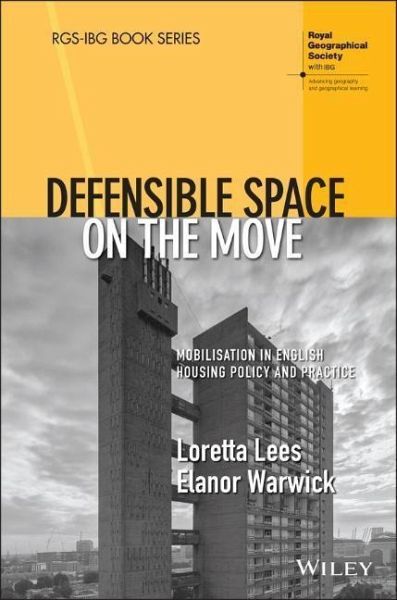
Defensible Space on the Move
Mobilisation in English Housing Policy and Practice
Versandkostenfrei!
Versandfertig in über 4 Wochen
86,99 €
inkl. MwSt.
Weitere Ausgaben:

PAYBACK Punkte
43 °P sammeln!
Both theoretically informed and empirically rich, Defensible Space makes an important conceptual contribution to policy mobilities thinking, to policy and practice, and also to practitioners handling of complex spatial concepts._ Critically examines the geographical concept Defensible Space, which has been influential in designing out crime to date, and has been applied to housing estates in the UK, North America, Europe and beyond_ Evaluates the movement/mobility/mobilisation of defensible space from the US to the UK and into English housing policy and practice_ Explores the multiple ways the...
Both theoretically informed and empirically rich, Defensible Space makes an important conceptual contribution to policy mobilities thinking, to policy and practice, and also to practitioners handling of complex spatial concepts.
_ Critically examines the geographical concept Defensible Space, which has been influential in designing out crime to date, and has been applied to housing estates in the UK, North America, Europe and beyond
_ Evaluates the movement/mobility/mobilisation of defensible space from the US to the UK and into English housing policy and practice
_ Explores the multiple ways the concept of defensible space was interpreted and implemented, as it circulated from national to local level and within particular English housing estates
_ Critiquing and pushing forwards work on policy mobilities, the authors illustrate for the first time how transfer mechanisms worked at both a policy and practitioner level
_ Drawing on extensive archival research, oral histories and in-depth interviews, this important book reveals defensible space to be ambiguous, uncertain in nature, neither proven or disproven scientifically
_ Critically examines the geographical concept Defensible Space, which has been influential in designing out crime to date, and has been applied to housing estates in the UK, North America, Europe and beyond
_ Evaluates the movement/mobility/mobilisation of defensible space from the US to the UK and into English housing policy and practice
_ Explores the multiple ways the concept of defensible space was interpreted and implemented, as it circulated from national to local level and within particular English housing estates
_ Critiquing and pushing forwards work on policy mobilities, the authors illustrate for the first time how transfer mechanisms worked at both a policy and practitioner level
_ Drawing on extensive archival research, oral histories and in-depth interviews, this important book reveals defensible space to be ambiguous, uncertain in nature, neither proven or disproven scientifically













